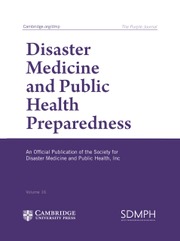As we reflect on the latest findings regarding mortality patterns in Somalia, it is clear that the ongoing drought has had a devastating impact. Between 2022 and 2024, more than 70 000 lives were lost, with nearly 40% of those deaths occurring among children under the age of 5. This heartbreaking reality underscores the urgent need for action to address the human cost of the drought, particularly its disproportionate impact on Somalia’s most vulnerable populations.1
The 2022 drought, which affected nearly half of Somalia’s population, brought the country to the brink of famine. Although famine was narrowly avoided through the tireless efforts of the Somali government and humanitarian partners, the consequences of the drought persist. Thousands of families continue to face a lack of essential resources and health care, with the southern-central regions of Somalia, such as Banadir, Bay, and Lower Shabelle, being the hardest hit. Meanwhile, the northeast regions, while still grappling with food insecurity, experienced relatively lower mortality rates.1
The study “From Insight to Action: An Update on Mortality Patterns in Somalia” highlights the profound and lasting impact of the drought. Most excess deaths attributed to the drought were children, presenting a future robbed of potential. This loss represents not just a tragedy for individual families but a long-term social and economic setback for the nation.1
WHO Representative in Somalia, Dr. Renee van De Weerdt, emphasized that most of these deaths were preventable. She called for continued collaboration between the government, international partners, and the private sector to build a resilient health care system capable of responding to the recurring challenges posed by climate change, conflict, and food insecurity.1 Similarly, UNICEF’s Wafaa Saeed stressed that climate-induced disasters are not isolated events, but recurring crises that demand an immediate, sustained response.1
The findings underscore the critical need for a long-term approach to address Somalia’s vulnerabilities. The future of Somalia depends on building a robust health system and ensuring that communities are equipped to withstand and recover from future crises.2, 3
A Call to Action
The Somali government and its partners must prioritize strengthening the country’s health emergency preparedness and response systems. This includes investing in integrated health and nutrition services, particularly at the community level, to ensure the most vulnerable, especially children, have access to life-saving care.
Building Resilience for the Future
Somalia cannot afford to wait for the next drought. Investments in climate-resilient agriculture and the implementation of early warning systems and safety nets to break the cycle of disaster are particularly salient. By empowering communities to better withstand and recover from crises, Somalia can build a more sustainable future.4, 5
The World Must Act
The international community has a vital role to play. While humanitarian aid is necessary to address the immediate needs, long-term solutions require a commitment to supporting Somalia’s development and enhancing its resilience to climate change.
The time to act is now. Somalia’s children cannot afford to wait for another crisis to unfold. They need better health care, access to clean water, improved nutrition, and a stronger safety net to survive and thrive. Only through collective action can Somalia break the cycle of disaster and ensure a brighter future for its children.
Acknowledgments
We would like to express our sincere gratitude to all the authors for their invaluable support and contributions, without which this research would not have been possible. Our heartfelt thanks go to our families and friends for their unwavering support and encouragement throughout this research project. Their love and encouragement have been a constant source of inspiration and strength for us.
Author contribution
Saadaq Adan Hussein: Conceptualization and Writing - Original Draft; Marian Muse Osman: Methodology; Prof. Mohamed Mohamoud Hassan: Validation; Yahye Sheikh Abdulle: Supervision; Abdirahman Aden Hussein: Conceptualization; Dr Tahlil Abdi Afrah: Methodology; Rage Adem: Supervision; Prof Mohamed M. Fuje: Supervision; Abdullahi Ali Hayle, Ayan Nor Ali: Supervision; Mohamed Farah Yusuf: Supervision; Abdullahi Ali Hayle: Conceptualization; AbdulJalil Abdullahi Ali: Validation.
Funding statement
This research received no specific grant from funding agencies in the public, commercial, or not-for-profit sectors.
Competing interests
The authors have no affiliation with any organization with a direct or indirect financial interest in the subject matter discussed in the manuscript. No conflict of interest is associated with this publication.

